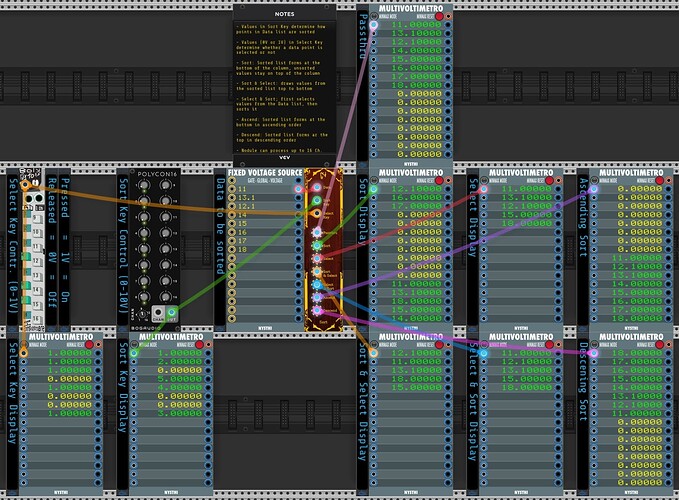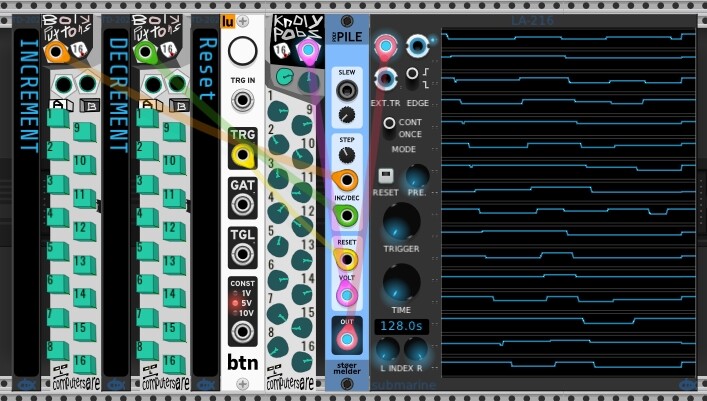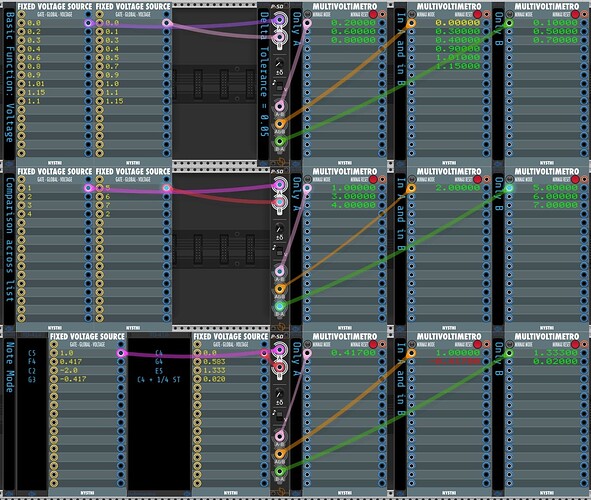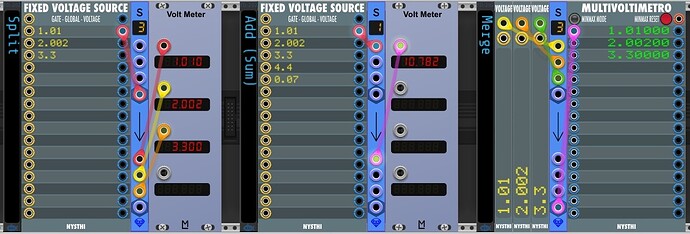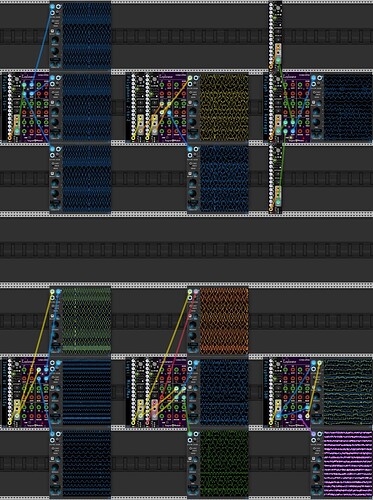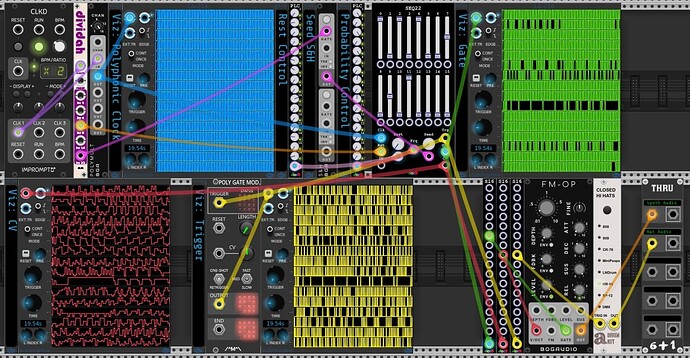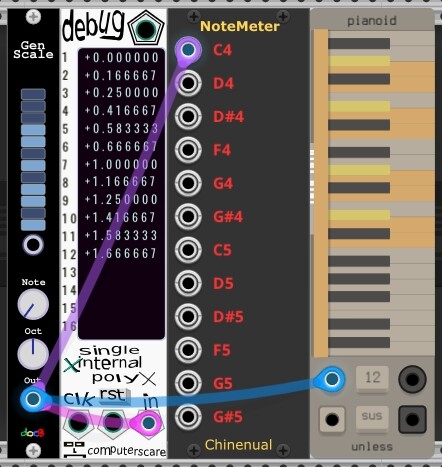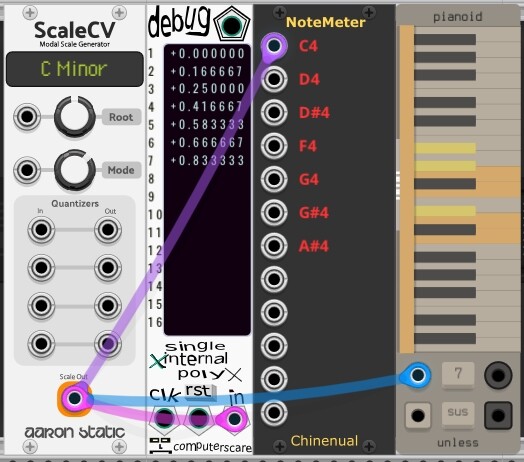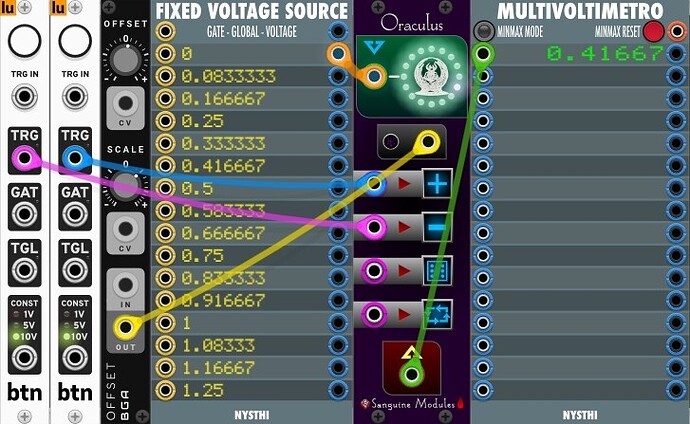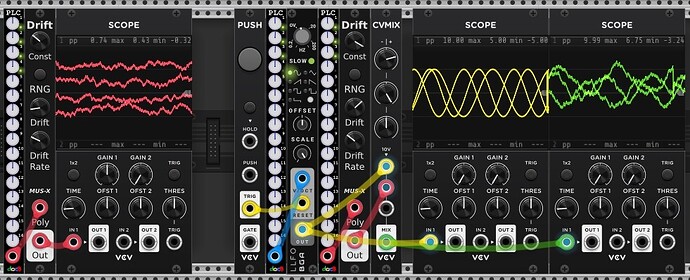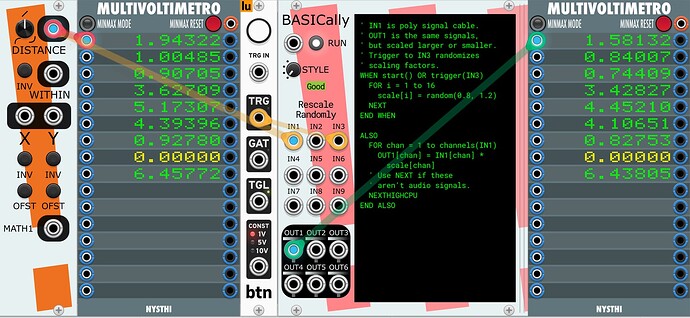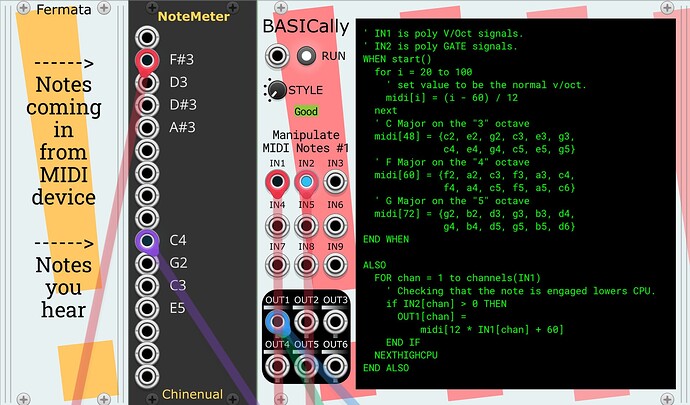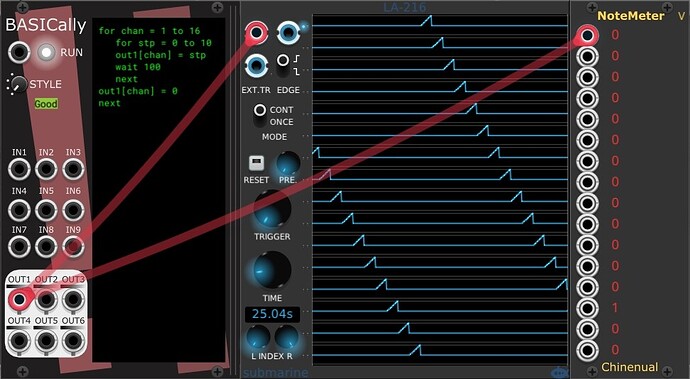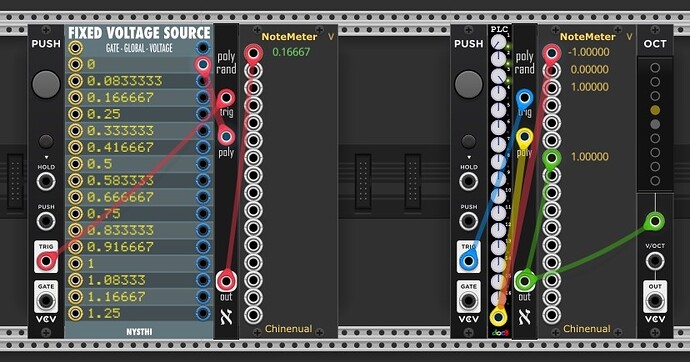SEQ22 (docB)
SEQ22 by docB is a versatile, polyphonic stochastic sequencer, producing up to 16 different CV, gate and trigger sequences, respectively, each in form of a polyphonic signal.
Each of SEQ22’s sliders (0 through 15) controls a single CV value (e.g. a musical note) used to create the sequences.
If the IN port is not connected, CV values default to the chromatic note range of C4 (slider 0) to E5 (slider 15), corresponding to an output voltage of 0V to 1.25V. In contrast, if a polyphonic signal is connected to the IN port, output notes are set in accordance to the supplied voltages, e.g. C#4 at 0.8333V.
NB: Fixed polyphonic CV signals can, for example, be created easily using the GenScale (docB) module, which generates notes for a scale (such as C Major) based on selected buttons (bottom: Perfect Unison; top: Major Seventh).
SEQ22 produces random CV sequences that are either free running (if Seed = 0) or seeded (if Seed ≠ 0). Any seed value (except zero) produces a defined sequence. Each sequence is repeated upon sending a trigger to the Rst port. Therefore, sequence length is determined by timing of the reset signal and can be varied accordingly.
Sliders of each channel define the probability of the respective note to be triggered. Setting a slider to zero sets the note probability to zero, and in consequence this note will never play. Each slider has a monophonic input port (0-10V) to control probability with CV. Alternatively, a polyphonic signal can be sent to the Frq input port to control all slider values together.
In addition to CV-values, SEQ22 also produces 16 different (i.e. polyphonic) trigger and gate patterns via the Trg and Gte outputs, respectively.
Adjusting the Seed parameter changes the Trg and Gte patterns, with one exception: If Rest is set to zero, all Gte patterns become identical with the clock (Clk) input. Therefore, any changes in Seed affect the Gte pattern only if Rest is not zero! In contrast, Trg patterns are being maintained even if Seed is zero.
In addition, both, Trg and Gte output patterns vary when the Rest parameter is being altered.
Clk, Rst and Rest input ports are polyphonic, affecting individual polyphony channels. Seed input port only takes monophonic inputs.
UPC_Seq22 (docB)_2025019.vcvs (21.4 KB)
